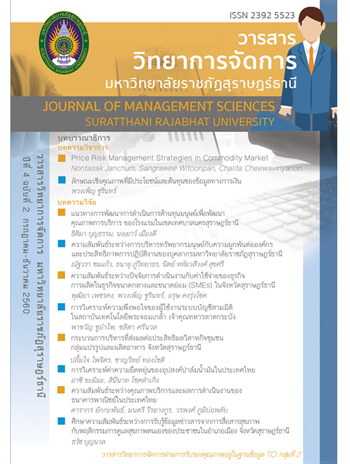Price Risk Management Strategies in Commodity Markets
Main Article Content
Abstract
Commodity prices have been unusually volatile in recent years, and such volatility widely impacts the majority of stakeholders in commodity supply chains. A salient example of this is natural rubber, the main economic crop for the south of Thailand, whose price movement is considered to be the main issue in the industry. Based on a literature review, we concluded that commodity Price Risk Management (PRM) is dominated by developed countries where markets have well-developed infrastructures. However, providing effective
solutions for agricultural commodity markets in less-developed countries is still challenging. This paper seeks to explore PRM strategies based upon a review of
the literature related to price risk and its management strategies in developing countries commodity markets. Following this literature review, five main PRM strategies were adopted in commodity markets, namely stocking, price hedging, pricing in advance, negotiation, and portfolio management. Both the advantages and disadvantages of these particular PRM strategies will be discussed in this paper. For example, the price hedging strategy has an advantage in avoiding negative impacts from price movements, but requires effective PRM tools to manage price risk. The findings of this study have a number of practical implications. Certain commodity market stakeholders, such as farmers,professional traders and policymakers, could gain greater understanding utilizing the range of PRM strategies discussed in this paper, and may be able to apply them to their specific contexts.


